 This is my first exposure to this UK-based collective centered around Gavin Miller (worriedaboutsatan) and Sophie Green (formerly of Her Name is Calla), but they have been fitfully releasing albums for more than a decade now. Their last major release, Scavengers, was back in 2016 on Time-Released Sound, so Eyes Like Pools both ends a lengthy hiatus and marks the collective’s first appearance on Athens’ sound in silence label. Much like Miller’s worriedaboutsatan project, this latest statement from Marta Mist occupies a vaguely cinematic stylistic niche where ambient and post-rock blur together, but Eyes Like Pools parts ways from worriedaboutsatan by swapping out electronic beats for Green’s achingly lovely violin melodies. While the more ambient side of Marta Mist’s current vision is appropriately warm and immersive, those pieces tend to be quite brief and the more substantial string-driven pieces are the true heart of the album (and it is a fiery heart indeed).
This is my first exposure to this UK-based collective centered around Gavin Miller (worriedaboutsatan) and Sophie Green (formerly of Her Name is Calla), but they have been fitfully releasing albums for more than a decade now. Their last major release, Scavengers, was back in 2016 on Time-Released Sound, so Eyes Like Pools both ends a lengthy hiatus and marks the collective’s first appearance on Athens’ sound in silence label. Much like Miller’s worriedaboutsatan project, this latest statement from Marta Mist occupies a vaguely cinematic stylistic niche where ambient and post-rock blur together, but Eyes Like Pools parts ways from worriedaboutsatan by swapping out electronic beats for Green’s achingly lovely violin melodies. While the more ambient side of Marta Mist’s current vision is appropriately warm and immersive, those pieces tend to be quite brief and the more substantial string-driven pieces are the true heart of the album (and it is a fiery heart indeed).
The album opens with a pleasant yet deceptive intro of gently rolling piano arpeggios before unveiling the first of its three major highlights: the 14-minute “Alway On.” The piece begins modestly enough with some lovely violin drones, but tendrils of melody soon start to appear and a low industrial hum gradually blossoms into a slow-moving chord progression driven by deep, warm bass tones. There are admittedly a couple of moments where it starts to err a bit too far towards soft-focus prettiness for my taste, but Green’s sliding, smearing, and occasionally snarling violin carves through the bliss haze enough to keep me transfixed regardless. More importantly, “Always On” delighted me with a very cool and unexpected ending in which echoey guitar chords slowly emerge from the ambient haze like a vengeful rockabilly ghost.


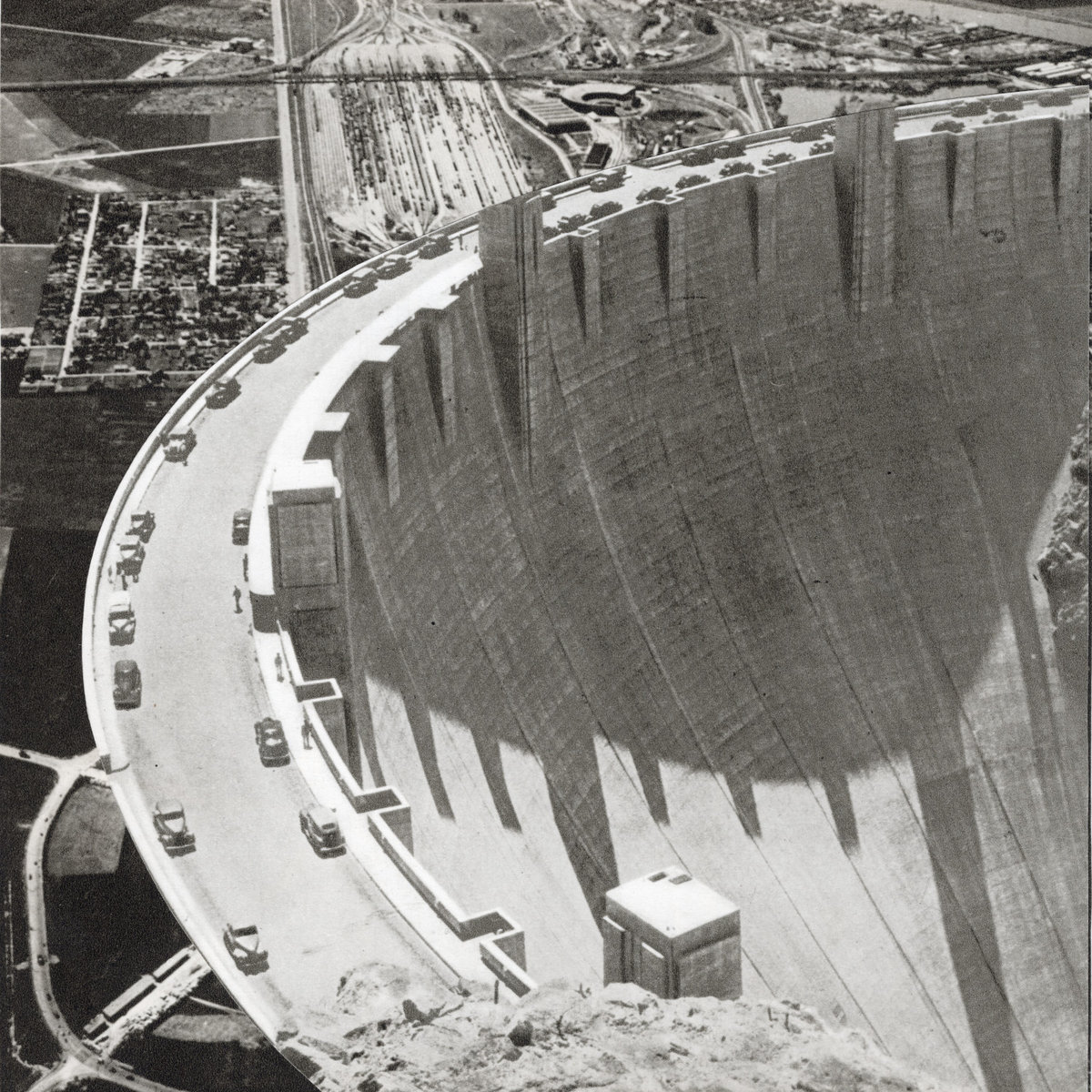 This is apparently the twelfth solo album from Berlin-based double bassist Mike Majknowski, but—far more significantly—it is also the follow up to 2021's killer Four Pieces and is very much in the same vein. That vein lies somewhere between loscil-style dubwise soundscapes and the austere sophistication of classic Tortoise or early Oren Ambarchi, which is certainly a fine place to set up shop, but that is merely the backdrop for some truly fascinating forays into sustained, simmering tension and exquisitely slow-burning heaviness. Unsurprisingly, I am like a moth to a flame when it comes to longform smoldering minimalism and I can think of few artists who can match Majknowski's execution, as he consistently weaves magic from little more than a few moving parts and a healthy appreciation for coiled, seething intensity.
This is apparently the twelfth solo album from Berlin-based double bassist Mike Majknowski, but—far more significantly—it is also the follow up to 2021's killer Four Pieces and is very much in the same vein. That vein lies somewhere between loscil-style dubwise soundscapes and the austere sophistication of classic Tortoise or early Oren Ambarchi, which is certainly a fine place to set up shop, but that is merely the backdrop for some truly fascinating forays into sustained, simmering tension and exquisitely slow-burning heaviness. Unsurprisingly, I am like a moth to a flame when it comes to longform smoldering minimalism and I can think of few artists who can match Majknowski's execution, as he consistently weaves magic from little more than a few moving parts and a healthy appreciation for coiled, seething intensity. This debut album from Danish artist/multi-instrumentalist Cecilie "Cisser" Mæhl is easily one of the strongest releases from Berlin's Sonic Pieces in recent memory. Mæhl has already carved out an impressively distinctive niche. Innemuseum first began taking shape in the summer of 2019 when Mæhl made a bunch of field recordings while working at a mountain lodge in Norway (though those recordings would ultimately become a very small part of the puzzle). After moving to Oslo, she rented a studio space and eventually met some inspiring people who helped guide her towards realizing her unconventional vision (Jenny Hval, Stephan Mathieu, and the increasingly ubiquitous and versatile Lasse Marhaug). The involvement of the latter was especially surprising for me, as this album has the intimate feel of a bedroom chamber pop masterpiece conjured from little more than a violin, a drum machine, and an ancient piano, which is generally not where I expect someone from Testicle Hazard to turn up. That said, the homespun, elegantly minimal feel of these pieces is presented in beautifully detailed, crystalline clarity, which is presumably where the Marhaug magic came into play. I suspect this album would still be quite good even if submerged in tape hiss and murk, as Mæhl has a lovely voice and plenty of great ideas, but the fact that these otherwise hushed songs explode in vivid color beautifully elevates Innemuseum to another level altogether.
This debut album from Danish artist/multi-instrumentalist Cecilie "Cisser" Mæhl is easily one of the strongest releases from Berlin's Sonic Pieces in recent memory. Mæhl has already carved out an impressively distinctive niche. Innemuseum first began taking shape in the summer of 2019 when Mæhl made a bunch of field recordings while working at a mountain lodge in Norway (though those recordings would ultimately become a very small part of the puzzle). After moving to Oslo, she rented a studio space and eventually met some inspiring people who helped guide her towards realizing her unconventional vision (Jenny Hval, Stephan Mathieu, and the increasingly ubiquitous and versatile Lasse Marhaug). The involvement of the latter was especially surprising for me, as this album has the intimate feel of a bedroom chamber pop masterpiece conjured from little more than a violin, a drum machine, and an ancient piano, which is generally not where I expect someone from Testicle Hazard to turn up. That said, the homespun, elegantly minimal feel of these pieces is presented in beautifully detailed, crystalline clarity, which is presumably where the Marhaug magic came into play. I suspect this album would still be quite good even if submerged in tape hiss and murk, as Mæhl has a lovely voice and plenty of great ideas, but the fact that these otherwise hushed songs explode in vivid color beautifully elevates Innemuseum to another level altogether. This latest enigmatic find from Arizona's eternally far out and fascinating Was Ist Das? label will be an absolute revelation for anyone who misses Natural Snow Buildings as much as I do. Otherworld is apparently the debut release for this project, but any further details beyond that are non-existent other than the fact that these four pieces were recorded by someone named "Joe" in 2022. While the label's description name-checks a few '70s psych heavy-hitters as reference points in addition to Natural Snow Buildings (Third Ear Band and Popul Vuh), those elements manifest themselves much more subtly, as Otherworld is an oft-transcendent plunge into folk horror-inspired cosmic drone sorcery. That all-encompassing devotion to heavyweight drone majesty is also where Myriad Valley departs from Mehdi and Solange's path, as Joe does not let himself get distracted by any songcraft aspirations, opting instead to focus entirely on crafting massive, sustained psychotropic drones that feel like ancient field recordings from some remote mountain cult hellbent on opening an extra-dimensional portal through sheer vibrational magic.
This latest enigmatic find from Arizona's eternally far out and fascinating Was Ist Das? label will be an absolute revelation for anyone who misses Natural Snow Buildings as much as I do. Otherworld is apparently the debut release for this project, but any further details beyond that are non-existent other than the fact that these four pieces were recorded by someone named "Joe" in 2022. While the label's description name-checks a few '70s psych heavy-hitters as reference points in addition to Natural Snow Buildings (Third Ear Band and Popul Vuh), those elements manifest themselves much more subtly, as Otherworld is an oft-transcendent plunge into folk horror-inspired cosmic drone sorcery. That all-encompassing devotion to heavyweight drone majesty is also where Myriad Valley departs from Mehdi and Solange's path, as Joe does not let himself get distracted by any songcraft aspirations, opting instead to focus entirely on crafting massive, sustained psychotropic drones that feel like ancient field recordings from some remote mountain cult hellbent on opening an extra-dimensional portal through sheer vibrational magic. This quadruple LP boxed set is likely to be an absolute revelation for Laraaji fans, as Numero Group has combined his landmark 1978 debut (Celestial Vibration) with the equivalent of three lost albums recorded around the same time. The albums in question surfaced in 2021 when some acetates from an abandoned storage locker were auctioned off and passed through a flea market and Ebay before being spotted by eagle-eyed college student Jake Fischer, who snapped them up for $114 after recognizing Laraaji's given name (Edward Larry Gordon, the name he was still using at the time of Celestial Vibration's release). Amusingly, even Laraaji himself is a bit mystified by the provenance of these recordings, as the documentation states that they were recorded at a studio in Long Island 200 miles from where the Celestial Vibration sessions took place (ZBS in Fort Edward). While it remains unclear whether the Fort Edward tapes were merely transferred in Long Island or whether these recordings actually originate from a different session altogether in Queens, they are unmistakably Laraaji and they are frequently as good or better than the album that actually got released. Finds like this are exactly why there are Discogs fiends hunting for lost private press New Age music, as the late '70s and early '80s were a golden age for bedroom visionaries who thanklessly explored the cosmos with little hope of ever reaching an audience. Laraaji deserves a particularly special place in that pantheon, as he may have been the most forward-thinking visionary of them all and also took his autoharp to the goddamn streets to expand the consciousness of unwitting strangers.
This quadruple LP boxed set is likely to be an absolute revelation for Laraaji fans, as Numero Group has combined his landmark 1978 debut (Celestial Vibration) with the equivalent of three lost albums recorded around the same time. The albums in question surfaced in 2021 when some acetates from an abandoned storage locker were auctioned off and passed through a flea market and Ebay before being spotted by eagle-eyed college student Jake Fischer, who snapped them up for $114 after recognizing Laraaji's given name (Edward Larry Gordon, the name he was still using at the time of Celestial Vibration's release). Amusingly, even Laraaji himself is a bit mystified by the provenance of these recordings, as the documentation states that they were recorded at a studio in Long Island 200 miles from where the Celestial Vibration sessions took place (ZBS in Fort Edward). While it remains unclear whether the Fort Edward tapes were merely transferred in Long Island or whether these recordings actually originate from a different session altogether in Queens, they are unmistakably Laraaji and they are frequently as good or better than the album that actually got released. Finds like this are exactly why there are Discogs fiends hunting for lost private press New Age music, as the late '70s and early '80s were a golden age for bedroom visionaries who thanklessly explored the cosmos with little hope of ever reaching an audience. Laraaji deserves a particularly special place in that pantheon, as he may have been the most forward-thinking visionary of them all and also took his autoharp to the goddamn streets to expand the consciousness of unwitting strangers.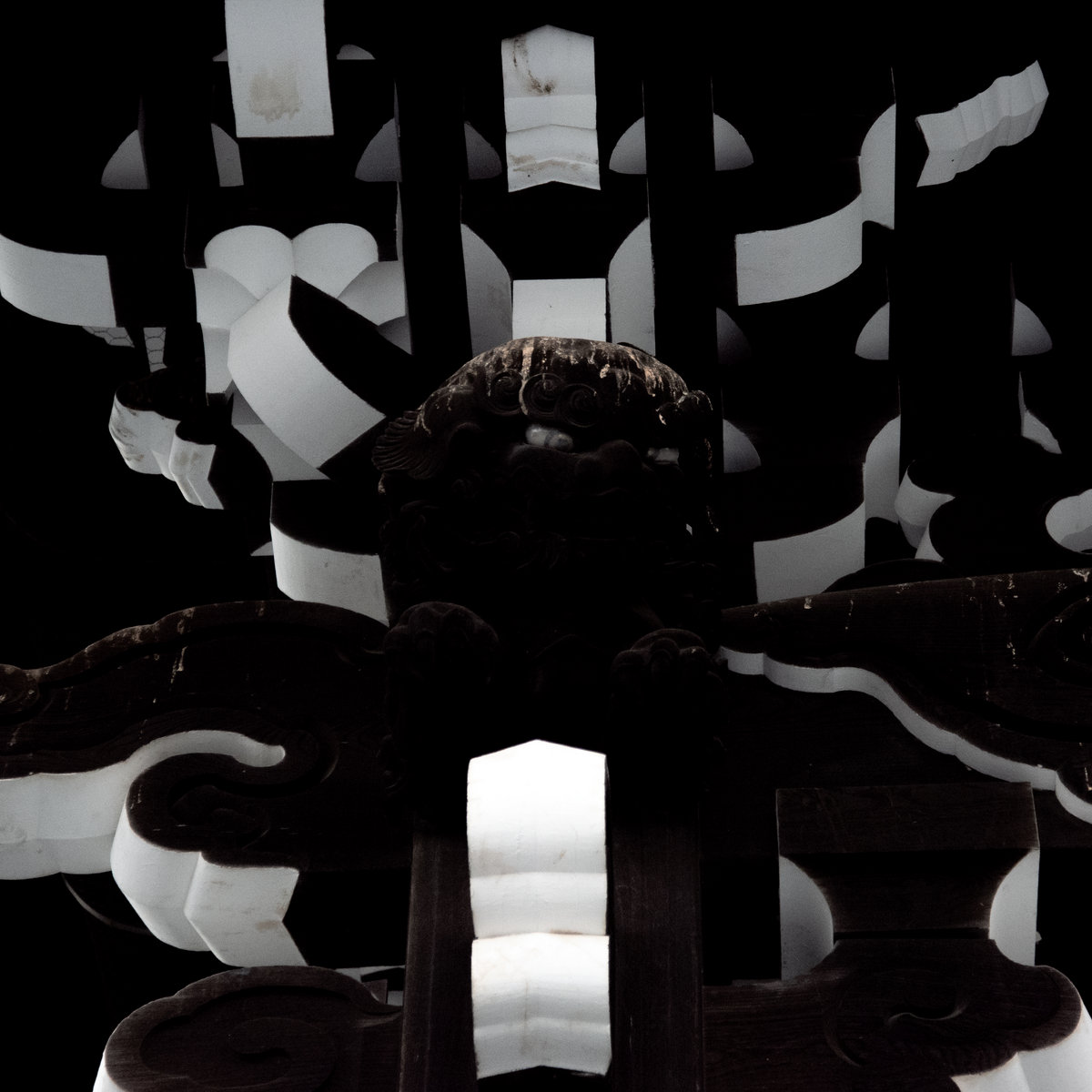 This latest opus from INA GRM's François J. Bonnet is loosely inspired by René Daumal's unfinished philosophical novel Mount Analogue (1952), which recounts an imagined expedition in which explorers hunt for a mountain that can "only be perceived by the application of obscure knowledge." It has been a few decades since I last read Mount Analogue or watched the film it partially inspired (Jodorowsky's Holy Mountain) so my memory of both is blurry at best, yet that did not impair my appreciation for the album, as Bonnet characteristically channeled the theme in his own inventive and compelling way. The gist is that familiar sounds and structures become increasingly rare as the album unfolds, but Bonnet had a deeper philosophical agenda as well, as Shifted in Dreams is a meditation on how our current world is in a "blurred and uncertain state where the reality of signs loses its consistency while, paradoxically, the reality of senses and impressions becomes imperative, obvious." Bonnet is clearly not a fan of that situation, unsurprisingly, and refers to it as "the reality of demons." Putting aside the death of meaning and general existential horror of our times, however, the dissolving of the familiar is wonderfully fertile creative ground for a Kassel Jaeger album, as Bonnet is exceptionally good at layered and evocative sound design. This is a beautifully crafted headphone album (but probably only for those armed with the obscure knowledge of how to listen deeply).
This latest opus from INA GRM's François J. Bonnet is loosely inspired by René Daumal's unfinished philosophical novel Mount Analogue (1952), which recounts an imagined expedition in which explorers hunt for a mountain that can "only be perceived by the application of obscure knowledge." It has been a few decades since I last read Mount Analogue or watched the film it partially inspired (Jodorowsky's Holy Mountain) so my memory of both is blurry at best, yet that did not impair my appreciation for the album, as Bonnet characteristically channeled the theme in his own inventive and compelling way. The gist is that familiar sounds and structures become increasingly rare as the album unfolds, but Bonnet had a deeper philosophical agenda as well, as Shifted in Dreams is a meditation on how our current world is in a "blurred and uncertain state where the reality of signs loses its consistency while, paradoxically, the reality of senses and impressions becomes imperative, obvious." Bonnet is clearly not a fan of that situation, unsurprisingly, and refers to it as "the reality of demons." Putting aside the death of meaning and general existential horror of our times, however, the dissolving of the familiar is wonderfully fertile creative ground for a Kassel Jaeger album, as Bonnet is exceptionally good at layered and evocative sound design. This is a beautifully crafted headphone album (but probably only for those armed with the obscure knowledge of how to listen deeply). This stellar collaboration springs from a conversation that Scott Morgan and Lawrence English once had about especially "rich sources" for electronic music composition. Unsurprisingly, that discussion led to the inspiration behind much of English's recent solo work: a 19th century pipe organ housed at the Old Museum in his native Brisbane. Colours Of Air is often quite different from English's drone-inspired solo fare, however, as he and Morgan sifted "the swells and drones of the organ for every shivering shade of radiance" and found "flickering infinities in ancient configurations of wind, brass, stone, and dust." In less poetic terms, that means that these eight color-themed pieces "reduce and expand" English's pipe organ recordings into a hallucinatory fantasia enhanced by Morgan's talents for elegantly textured sound design and submerged, slow-motion dub techno pulses. Obviously, promising-sounding collaborations between electronic music luminaries are a dime a dozen, but this is one of the rare ones that feels like an inspired departure from expected terrain and something greater than the sum of its parts. While I suspect my perception is at least partially colored by the album description and the timeless majesty and religious nature of old pipe organs, the best moments of this album beautifully evoke what I would imagine light filtering through stained glass would sound like if I had been blessed with synesthesia.
This stellar collaboration springs from a conversation that Scott Morgan and Lawrence English once had about especially "rich sources" for electronic music composition. Unsurprisingly, that discussion led to the inspiration behind much of English's recent solo work: a 19th century pipe organ housed at the Old Museum in his native Brisbane. Colours Of Air is often quite different from English's drone-inspired solo fare, however, as he and Morgan sifted "the swells and drones of the organ for every shivering shade of radiance" and found "flickering infinities in ancient configurations of wind, brass, stone, and dust." In less poetic terms, that means that these eight color-themed pieces "reduce and expand" English's pipe organ recordings into a hallucinatory fantasia enhanced by Morgan's talents for elegantly textured sound design and submerged, slow-motion dub techno pulses. Obviously, promising-sounding collaborations between electronic music luminaries are a dime a dozen, but this is one of the rare ones that feels like an inspired departure from expected terrain and something greater than the sum of its parts. While I suspect my perception is at least partially colored by the album description and the timeless majesty and religious nature of old pipe organs, the best moments of this album beautifully evoke what I would imagine light filtering through stained glass would sound like if I had been blessed with synesthesia.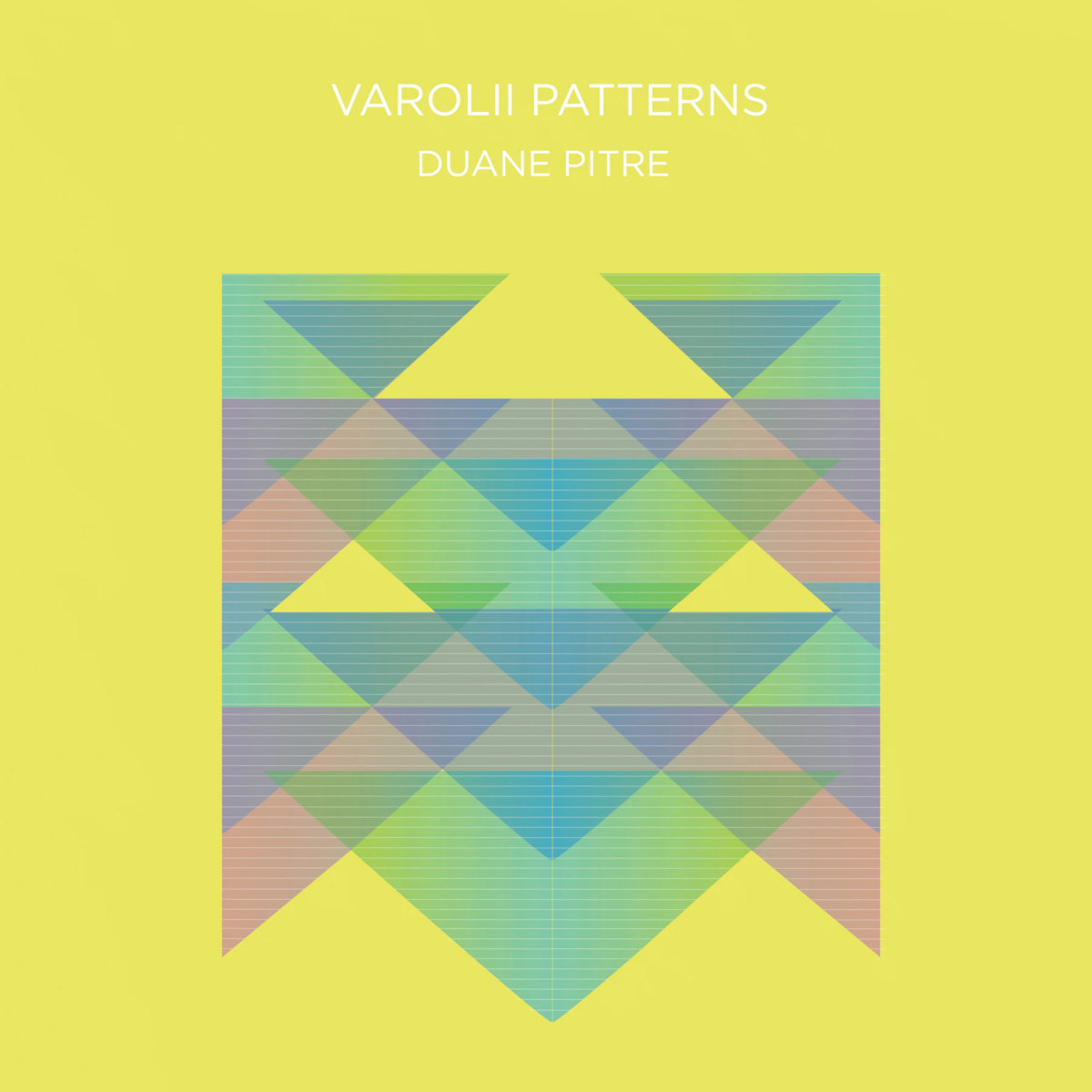 This latest cassette/digital release from composer/Just Intonation enthusiast Duane Pitre has its origins in a piece written for the brass ensemble Zinc & Copper a few years back (“Pons”), as he stumbled upon an intriguing process while “experimenting with microtonal electronics.” While those experiments did not ultimately make it into the final piece, they later surfaced as one element within 2021’s Omniscient Voices. That was just a fraction of the material recorded using that process, however, as Pitre had repeated it several dozen times and found himself with a considerable backlog of compelling material that was not an ideal fit for Omniscient Voices. Naturally, that led to the release of Varolii Patterns, which collects six of those process experiments that Pitre deemed strong enough to stand on their own both individually and as an album-length statement. The result is a unique and hypnotic suite of Just Intonation synth pieces that make magic from shifting patterns that “slip in and out of rhythmic focus.”
This latest cassette/digital release from composer/Just Intonation enthusiast Duane Pitre has its origins in a piece written for the brass ensemble Zinc & Copper a few years back (“Pons”), as he stumbled upon an intriguing process while “experimenting with microtonal electronics.” While those experiments did not ultimately make it into the final piece, they later surfaced as one element within 2021’s Omniscient Voices. That was just a fraction of the material recorded using that process, however, as Pitre had repeated it several dozen times and found himself with a considerable backlog of compelling material that was not an ideal fit for Omniscient Voices. Naturally, that led to the release of Varolii Patterns, which collects six of those process experiments that Pitre deemed strong enough to stand on their own both individually and as an album-length statement. The result is a unique and hypnotic suite of Just Intonation synth pieces that make magic from shifting patterns that “slip in and out of rhythmic focus.” Given Celer’s incredibly voluminous discography, releasing any kind of comprehensive retrospective would be one hell of a quixotic and cost-prohibitive endeavor, but this collection does the next best thing. Weighing in at 14 discs spanning 10 albums, this boxed set celebrates an especially significant and prolific era in the project’s evolution: the self-released albums that Will Long and the late Danielle Baquet-Long (Chubby Wolf) recorded as a duo before the latter’s passing in 2009. Not all of them, mind you, but this collection seems to at least cover the ones that matter most. Given that Celer is based in Japan and Bandcamp was still in its formative stages back then, I suspect very few people were hip enough to pounce on the duo’s early CD-Rs at the time of their original release, but the world definitely began to take notice soon after, as I remember Celer albums being a very hot commodity sometime around 2008/2009 when they started getting widely re-released. Unsurprisingly, there are some remastered fan favorites from that era included here, such as Continents and Cantus Libres, but I have grown so accustomed to Long’s current elegantly minimalist dream-drone aesthetic that I was legitimately surprised by the wider palette of moods and atmospheres explored at the project’s inception. Naturally, the gorgeously warm ambient dreamscapes that Celer has long been synonymous with are still the main draw here, but they are not the only draw, as I found it very illuminating to revisit the less-remembered noirish and sci-fi-inspired sides of the duo’s exploratory beginnings.
Given Celer’s incredibly voluminous discography, releasing any kind of comprehensive retrospective would be one hell of a quixotic and cost-prohibitive endeavor, but this collection does the next best thing. Weighing in at 14 discs spanning 10 albums, this boxed set celebrates an especially significant and prolific era in the project’s evolution: the self-released albums that Will Long and the late Danielle Baquet-Long (Chubby Wolf) recorded as a duo before the latter’s passing in 2009. Not all of them, mind you, but this collection seems to at least cover the ones that matter most. Given that Celer is based in Japan and Bandcamp was still in its formative stages back then, I suspect very few people were hip enough to pounce on the duo’s early CD-Rs at the time of their original release, but the world definitely began to take notice soon after, as I remember Celer albums being a very hot commodity sometime around 2008/2009 when they started getting widely re-released. Unsurprisingly, there are some remastered fan favorites from that era included here, such as Continents and Cantus Libres, but I have grown so accustomed to Long’s current elegantly minimalist dream-drone aesthetic that I was legitimately surprised by the wider palette of moods and atmospheres explored at the project’s inception. Naturally, the gorgeously warm ambient dreamscapes that Celer has long been synonymous with are still the main draw here, but they are not the only draw, as I found it very illuminating to revisit the less-remembered noirish and sci-fi-inspired sides of the duo’s exploratory beginnings. This third album from former lifeguard/Brussels-based electronic composer Poirier may very well be the most beautiful distillation of his gently psychotropic strain of loop-driven, summery, surf-side electronica to date. The same could have been said of 2020's Hotel Nota, of course, but Poirier's work genuinely seems to become more fascinating with each fresh album (and each new detail that I read about his inspirations). Unsurprisingly, Living Room does not dramatically depart from the "Jan Jelinek inspecting a coral reef" aesthetic first debuted on 2016's Plage Arrière, but it feels like Poirier's sundappled, beach-friendly vision of languorously flickering loops is increasingly headed deeper into more exotica-inspired territory, which is almost always a good move in my book. Aside from that continuing stylistic evolution, Living Room is also significant for being the first Poirier album to feature another one of his long-standing fascinations: the innate musicality of the human voice (particularly when de-coupled from language and meaning). Unsurprisingly, Poirier incorporates that new feature in a characteristically compelling and poignant way, as the album is peppered with chopped, screwed, and decontextualized fragments from his musician father's sample collection. The result is not quite "pop," yet it gets surprisingly close to it at times and those ephemeral glimpses of human warmth suit Poirier's swaying and sublime tropical dream beautifully.
This third album from former lifeguard/Brussels-based electronic composer Poirier may very well be the most beautiful distillation of his gently psychotropic strain of loop-driven, summery, surf-side electronica to date. The same could have been said of 2020's Hotel Nota, of course, but Poirier's work genuinely seems to become more fascinating with each fresh album (and each new detail that I read about his inspirations). Unsurprisingly, Living Room does not dramatically depart from the "Jan Jelinek inspecting a coral reef" aesthetic first debuted on 2016's Plage Arrière, but it feels like Poirier's sundappled, beach-friendly vision of languorously flickering loops is increasingly headed deeper into more exotica-inspired territory, which is almost always a good move in my book. Aside from that continuing stylistic evolution, Living Room is also significant for being the first Poirier album to feature another one of his long-standing fascinations: the innate musicality of the human voice (particularly when de-coupled from language and meaning). Unsurprisingly, Poirier incorporates that new feature in a characteristically compelling and poignant way, as the album is peppered with chopped, screwed, and decontextualized fragments from his musician father's sample collection. The result is not quite "pop," yet it gets surprisingly close to it at times and those ephemeral glimpses of human warmth suit Poirier's swaying and sublime tropical dream beautifully. This latest release from this eternally innovative Stockholm-based composer is a durational tour de force that first began to take shape in empty Berlin concert halls in the early months of the pandemic. While I note with grim humor that the pandemic has itself become an endlessly shifting durational tour de force, Malone’s primary inspiration came instead from the ambient sense of unreality and distorted time that became pervasive as the fabric of normal daily life quickly unraveled. Like many other artists, Malone suddenly found herself with plenty of free time during that period of dread, isolation, and uncertainty, yet she was fortunate enough to get an invitation to record new music at Berlin’s Funkhaus and MONOM and even luckier still to have some extremely talented friends around with newly open schedules themselves. In short, the stars were in perfect alignment for one hell of an avant-drone dream team to form, as Malone (armed with 72 sine wave oscillators) tapped in like-minded souls Stephen O’Malley and Lucy Railton and the expected slow-burning dark sorcery ensued. Does Spring Hide Its Joy feels like an inspired twist on the longform drone majesty of artists like Éliane Radigue, as Malone employed just intonation to layer complex and otherworldly harmonies while her collaborators gamely helped ensure that the crescendos were visceral, gnarled and snarling enough to leave a deep impression.
This latest release from this eternally innovative Stockholm-based composer is a durational tour de force that first began to take shape in empty Berlin concert halls in the early months of the pandemic. While I note with grim humor that the pandemic has itself become an endlessly shifting durational tour de force, Malone’s primary inspiration came instead from the ambient sense of unreality and distorted time that became pervasive as the fabric of normal daily life quickly unraveled. Like many other artists, Malone suddenly found herself with plenty of free time during that period of dread, isolation, and uncertainty, yet she was fortunate enough to get an invitation to record new music at Berlin’s Funkhaus and MONOM and even luckier still to have some extremely talented friends around with newly open schedules themselves. In short, the stars were in perfect alignment for one hell of an avant-drone dream team to form, as Malone (armed with 72 sine wave oscillators) tapped in like-minded souls Stephen O’Malley and Lucy Railton and the expected slow-burning dark sorcery ensued. Does Spring Hide Its Joy feels like an inspired twist on the longform drone majesty of artists like Éliane Radigue, as Malone employed just intonation to layer complex and otherworldly harmonies while her collaborators gamely helped ensure that the crescendos were visceral, gnarled and snarling enough to leave a deep impression. This mammoth and category-defying opus is easily the most wildly ambitious debut in recent memory (if not ever) and also happens to be one of my absolute favorite albums of 2022. It was one hell of an enigma at first as well, as Stroom quietly released the album back in October with absolutely no background information provided at all. Given the absolutely bananas volume of material (4 ½ hours) and the consistently high level of quality, I expected that it would be revealed to be some sort of decade-spanning art project involving an all-star cast of sound art luminaries, but I turned out to be spectacularly wrong about most of that. As it turns out, Voice Actor is instead a recent collaboration between Noa Kurzweil (Supertalented) and Levi Lanser (Ludittes), neither of whom I had previously encountered. However, I was at least partially right about the “art project” bit, as Sent From My Telephone collects three years of pieces that the duo originally intended as a radio play (and there are plenty of guest collaborators involved as well). The heart of the project, however, is Kurzweil’s seductive voice and her enigmatic diaristic monologues, which makes Félicia Atkinson a close kindred spirit, yet Lanser’s varied and phantasmagoric backdrops elevate the project into a mesmerizing durational mindfuck that effortlessly blurs the lines between spoken word, plunderphonics, ambient drone, outsider R&B, psychedelia, and Hype Williams’ hypnagogic sound collage side.
This mammoth and category-defying opus is easily the most wildly ambitious debut in recent memory (if not ever) and also happens to be one of my absolute favorite albums of 2022. It was one hell of an enigma at first as well, as Stroom quietly released the album back in October with absolutely no background information provided at all. Given the absolutely bananas volume of material (4 ½ hours) and the consistently high level of quality, I expected that it would be revealed to be some sort of decade-spanning art project involving an all-star cast of sound art luminaries, but I turned out to be spectacularly wrong about most of that. As it turns out, Voice Actor is instead a recent collaboration between Noa Kurzweil (Supertalented) and Levi Lanser (Ludittes), neither of whom I had previously encountered. However, I was at least partially right about the “art project” bit, as Sent From My Telephone collects three years of pieces that the duo originally intended as a radio play (and there are plenty of guest collaborators involved as well). The heart of the project, however, is Kurzweil’s seductive voice and her enigmatic diaristic monologues, which makes Félicia Atkinson a close kindred spirit, yet Lanser’s varied and phantasmagoric backdrops elevate the project into a mesmerizing durational mindfuck that effortlessly blurs the lines between spoken word, plunderphonics, ambient drone, outsider R&B, psychedelia, and Hype Williams’ hypnagogic sound collage side.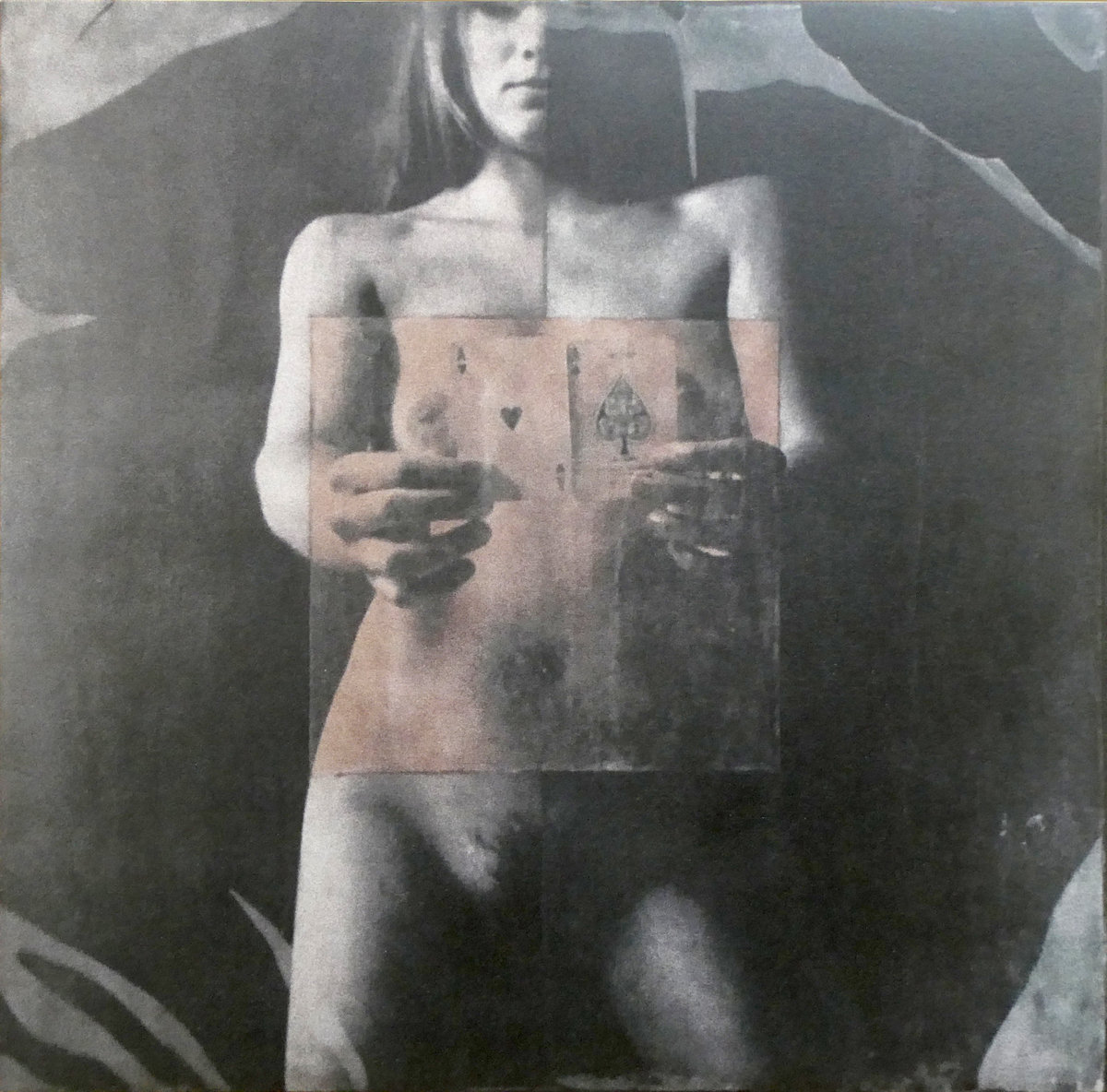 The French Standard In-Fi label has been one of my casual obsessions over the last few years and this second album from Omertà was my favorite release that surfaced from that milieu in 2022. From what I can tell as an outsider, there appears to be a loosely knit family of artists, psych enthusiasts, and avant-folk weirdos that convene periodically in varying configurations and occasionally an album will eventually surface documenting whatever magic transpired. Omertà unsurprisingly shares key members with other fitfully killer projects like France and Tanz Mein Herz, but this ensemble is an unique animal for a number of reasons. The most striking of those reasons are the breathy, sensuous vocals of Florence Giroud, who I believe is only active in this one project (as far as rock bands are concerned, at least). Giroud’s vocals aside, Omertà is also far more informed by eroticism, dream states, pop music, and chansons than the usual Standard In-Fi fare. To my ears, something compelling almost always seems to happen whenever Jeremie Sauvage &
The French Standard In-Fi label has been one of my casual obsessions over the last few years and this second album from Omertà was my favorite release that surfaced from that milieu in 2022. From what I can tell as an outsider, there appears to be a loosely knit family of artists, psych enthusiasts, and avant-folk weirdos that convene periodically in varying configurations and occasionally an album will eventually surface documenting whatever magic transpired. Omertà unsurprisingly shares key members with other fitfully killer projects like France and Tanz Mein Herz, but this ensemble is an unique animal for a number of reasons. The most striking of those reasons are the breathy, sensuous vocals of Florence Giroud, who I believe is only active in this one project (as far as rock bands are concerned, at least). Giroud’s vocals aside, Omertà is also far more informed by eroticism, dream states, pop music, and chansons than the usual Standard In-Fi fare. To my ears, something compelling almost always seems to happen whenever Jeremie Sauvage &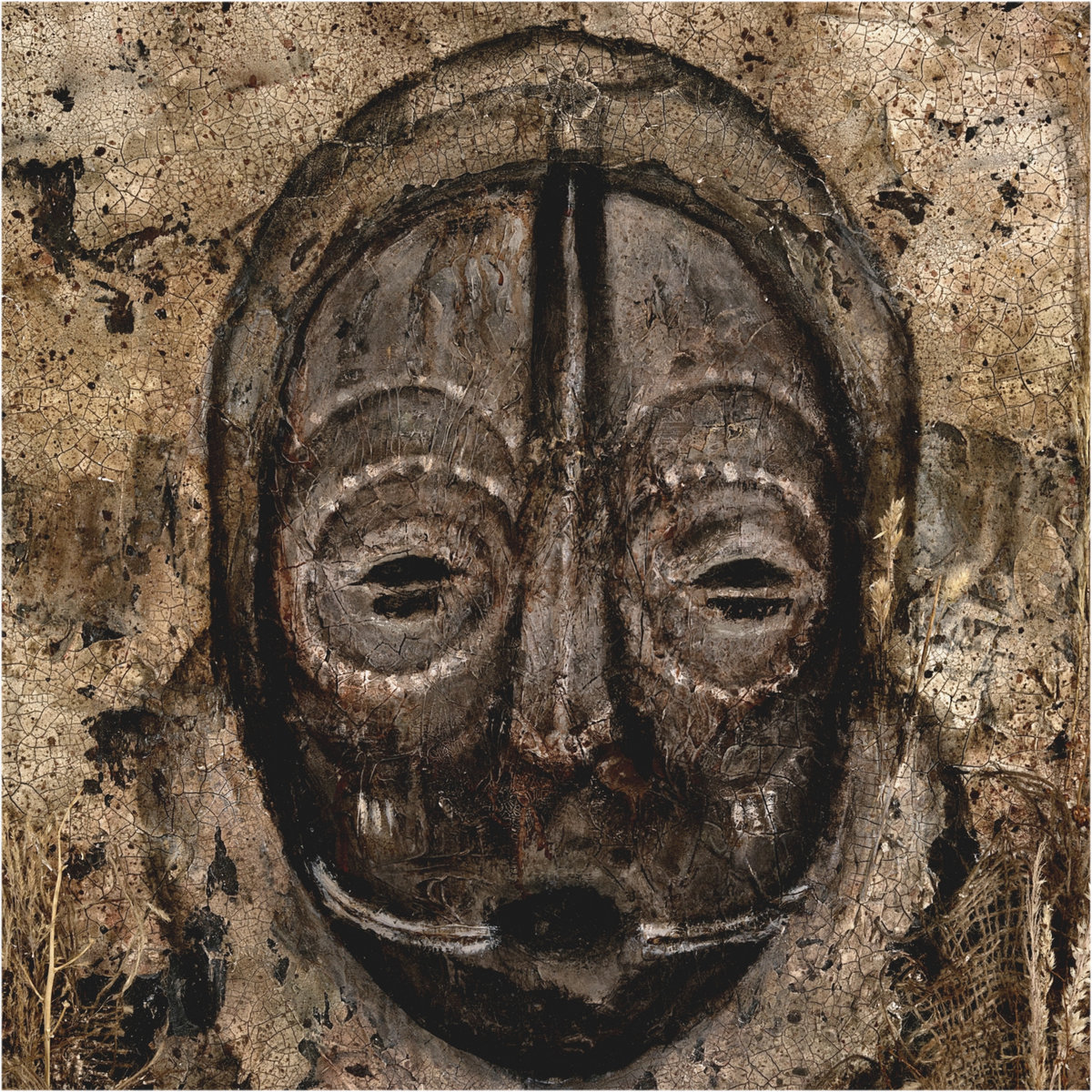 The latest from this shapeshifting and anonymous southwestern psych duo marks both their return to Akuphone and the first proper follow up to 2020's landmark The Totemist. To some degree, Ak'Chamel revisit roughly the same distinctive stylistic terrain as their last LP, approximating some kind of otherworldly and psychotropic collision of Sun City Girls and Sublime Frequencies. That said, Ak'Chamel do sound a hell of a lot more like a mariachi band soundtracking a jungle puppet nightmare this time around and that festively macabre vibe suits them quite nicely. The band might see things a little differently themselves, as this album is billed as "a perfect soundtrack for the desertification of our world," but experiencing this lysergic Cannibal Holocaust-esque mindfuck is probably just the thing for helping someone appreciate the wide-open spaces and solitude of desert life. In keeping with that desert theme, there are plenty of prominent Middle Eastern melodies and instruments on the album, but Ak'Chamel is singularly adept at dissolving regional boundaries (and possibly dimensional ones as well) in their quest for deep, exotic, and oft-uncategorizable psychedelia.
The latest from this shapeshifting and anonymous southwestern psych duo marks both their return to Akuphone and the first proper follow up to 2020's landmark The Totemist. To some degree, Ak'Chamel revisit roughly the same distinctive stylistic terrain as their last LP, approximating some kind of otherworldly and psychotropic collision of Sun City Girls and Sublime Frequencies. That said, Ak'Chamel do sound a hell of a lot more like a mariachi band soundtracking a jungle puppet nightmare this time around and that festively macabre vibe suits them quite nicely. The band might see things a little differently themselves, as this album is billed as "a perfect soundtrack for the desertification of our world," but experiencing this lysergic Cannibal Holocaust-esque mindfuck is probably just the thing for helping someone appreciate the wide-open spaces and solitude of desert life. In keeping with that desert theme, there are plenty of prominent Middle Eastern melodies and instruments on the album, but Ak'Chamel is singularly adept at dissolving regional boundaries (and possibly dimensional ones as well) in their quest for deep, exotic, and oft-uncategorizable psychedelia. This latest album from Carla dal Forno is her first since relocating to a small town (Castlemaine) in her native Australia and that dramatic change in environment has understandably made quite an impact on her overall vibe (as the album description puts it, she "returns self-assured and firmly settled within the dense eucalypt bushlands"). Fortunately, it seems like the transformation was an entirely favorable one, as literally everything that made dal Forno's previous work so wonderful and distinctive (ghostly pop hooks, stark bass-driven post-punk grooves, tight songcraft) remains intact. Now, however, her bloodless pop songs are charmingly enhanced with an understated tropical feel as well. For the most part, Come Around is still light years away from anything like a conventional beach party, but songs like the title piece at least come close to approximating a hypnagogic one. Aside from that, dal Forno also displays some impressive creative evolution on the production side, as these nine songs are a feast of subtle dubwise and psych-inspired touches in the periphery. That said, the primary appeal of Come Around is still the same as ever, as dal Forno remains nearly unerring in churning out songs so strong that they truly do not need anything more than her voice, a cool bass line, and a simple drum machine groove to leave a deep impression.
This latest album from Carla dal Forno is her first since relocating to a small town (Castlemaine) in her native Australia and that dramatic change in environment has understandably made quite an impact on her overall vibe (as the album description puts it, she "returns self-assured and firmly settled within the dense eucalypt bushlands"). Fortunately, it seems like the transformation was an entirely favorable one, as literally everything that made dal Forno's previous work so wonderful and distinctive (ghostly pop hooks, stark bass-driven post-punk grooves, tight songcraft) remains intact. Now, however, her bloodless pop songs are charmingly enhanced with an understated tropical feel as well. For the most part, Come Around is still light years away from anything like a conventional beach party, but songs like the title piece at least come close to approximating a hypnagogic one. Aside from that, dal Forno also displays some impressive creative evolution on the production side, as these nine songs are a feast of subtle dubwise and psych-inspired touches in the periphery. That said, the primary appeal of Come Around is still the same as ever, as dal Forno remains nearly unerring in churning out songs so strong that they truly do not need anything more than her voice, a cool bass line, and a simple drum machine groove to leave a deep impression. This is the first full-length collaboration between Sabra and Tabbal, but it is apparently also the sixth collaborative release between Portland's Beacon Sound and Lebanon's Ruptured Records (which was co-founded by Tabbal). While Tabbal's solo work has been a very enjoyable recent discovery for me, this is my first encounter with Julia Sabra, who is normally one-third of the excellent Beirut-based dreampop trio Postcards. The pair do have a history of working together, as Tabbal has co-produced several Postcards releases, but their creative union only began to take shape in the aftermath of Beirut's massive 2020 port explosion (which destroyed Sabra's home, badly injured her partner/bandmate Pascal Semerdjian, and displaced a whopping 300,000 people). Unsurprisingly, one of the primary themes of Snakeskin is the precarious concept of "home" and the "the disappearance of life as we know it" in a volatile and oft-violent world. Those are admittedly more urgent themes in Tabbal and Sabra's neck of the woods than some others (the album was also inspired by the 2021 Palestinian and the invasion of Armenia), but loss and uncertainty eventually come for us all and they make a universally poignant emotional core for an album. And, of course, great art can sometimes emerge from deeply felt tragedies and Tabbal and Sabra are a match made in heaven for that challenge, as Julia's sensuous, floating vocals are the perfect complement to Tabbal's gnarled and heaving soundscapes.
This is the first full-length collaboration between Sabra and Tabbal, but it is apparently also the sixth collaborative release between Portland's Beacon Sound and Lebanon's Ruptured Records (which was co-founded by Tabbal). While Tabbal's solo work has been a very enjoyable recent discovery for me, this is my first encounter with Julia Sabra, who is normally one-third of the excellent Beirut-based dreampop trio Postcards. The pair do have a history of working together, as Tabbal has co-produced several Postcards releases, but their creative union only began to take shape in the aftermath of Beirut's massive 2020 port explosion (which destroyed Sabra's home, badly injured her partner/bandmate Pascal Semerdjian, and displaced a whopping 300,000 people). Unsurprisingly, one of the primary themes of Snakeskin is the precarious concept of "home" and the "the disappearance of life as we know it" in a volatile and oft-violent world. Those are admittedly more urgent themes in Tabbal and Sabra's neck of the woods than some others (the album was also inspired by the 2021 Palestinian and the invasion of Armenia), but loss and uncertainty eventually come for us all and they make a universally poignant emotional core for an album. And, of course, great art can sometimes emerge from deeply felt tragedies and Tabbal and Sabra are a match made in heaven for that challenge, as Julia's sensuous, floating vocals are the perfect complement to Tabbal's gnarled and heaving soundscapes.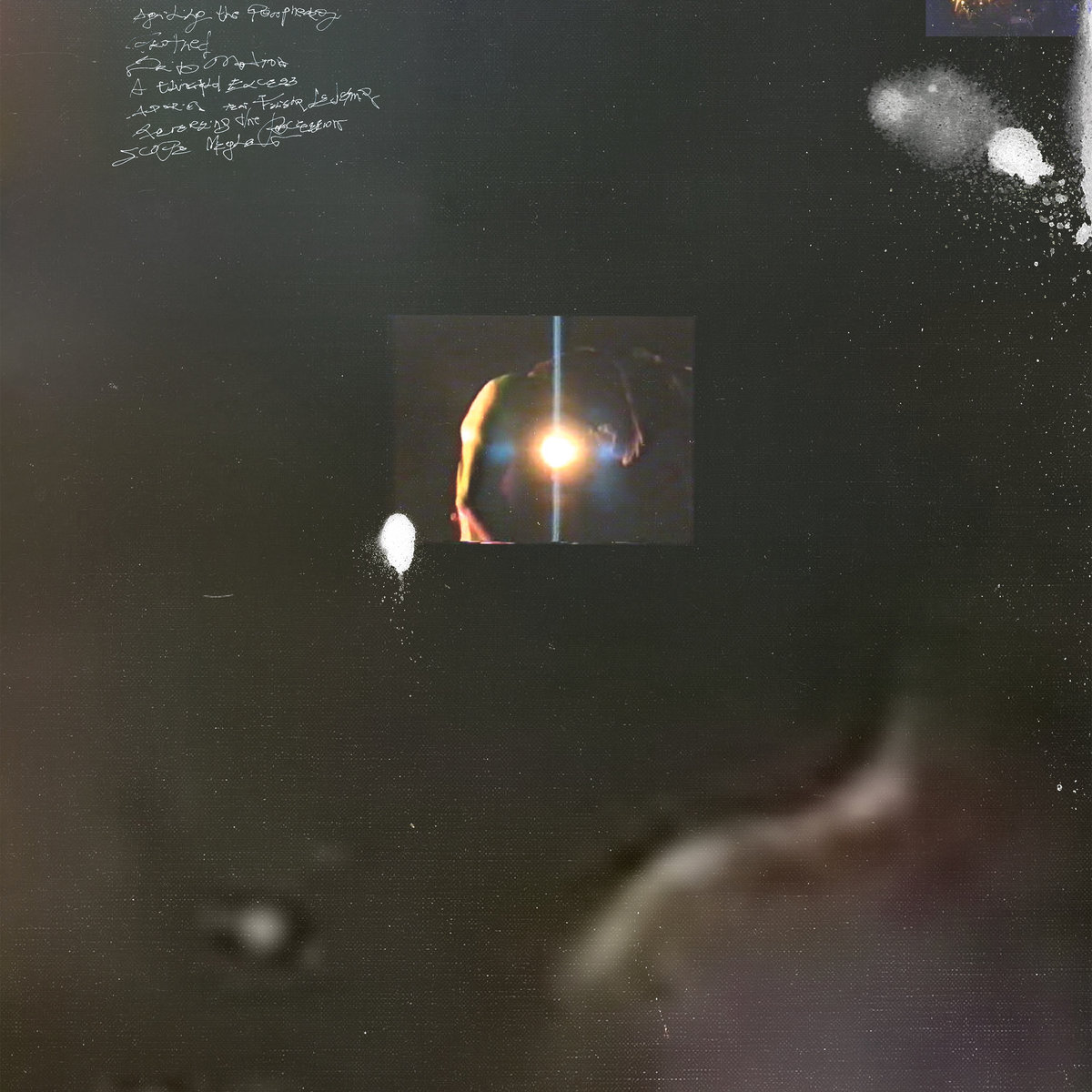 I was a bit later to the Angelo Harmsworth party than I would have liked, but the Berlin-based American composer has been fitfully releasing very distinctive blown-out "ambient" albums for about a decade now on an array of hip and discriminating small labels (Opal Tapes, Vaagner, enmossed, Psychic Liberation, etc.). Harmsworth's latest is his first for Students of Decay and marks a rare vinyl outing, as most of his previous physical releases have been limited to cassette. According to the label, Singe "may be the high water mark" of Harmsworth's career to date, which does feel like a completely plausible claim, but one that is very hard to confidently echo given how many killer Harmsworth pieces already exist. Even if Singe fails to conclusively eclipse all of Harmsworth's past triumphs, however, it does seem to be one of his most consistently strong releases and an ideal starting point for the curious. Notably, describing Harmsworth's vision as "ambient" or even "power ambient" feels cruelly reductionist, which is probably why he amusingly titled a 2020 release Fully Automated Luxury Ambient. That imaginary subgenre feels much closer to the mark, as the intensity and textural inventiveness that Angelo brings to these compositions shares far more common ground with artists like Tim Hecker or Fennesz (or collapsing power lines during a live volcano) than it does with anyone trafficking in droning, meditative loops.
I was a bit later to the Angelo Harmsworth party than I would have liked, but the Berlin-based American composer has been fitfully releasing very distinctive blown-out "ambient" albums for about a decade now on an array of hip and discriminating small labels (Opal Tapes, Vaagner, enmossed, Psychic Liberation, etc.). Harmsworth's latest is his first for Students of Decay and marks a rare vinyl outing, as most of his previous physical releases have been limited to cassette. According to the label, Singe "may be the high water mark" of Harmsworth's career to date, which does feel like a completely plausible claim, but one that is very hard to confidently echo given how many killer Harmsworth pieces already exist. Even if Singe fails to conclusively eclipse all of Harmsworth's past triumphs, however, it does seem to be one of his most consistently strong releases and an ideal starting point for the curious. Notably, describing Harmsworth's vision as "ambient" or even "power ambient" feels cruelly reductionist, which is probably why he amusingly titled a 2020 release Fully Automated Luxury Ambient. That imaginary subgenre feels much closer to the mark, as the intensity and textural inventiveness that Angelo brings to these compositions shares far more common ground with artists like Tim Hecker or Fennesz (or collapsing power lines during a live volcano) than it does with anyone trafficking in droning, meditative loops.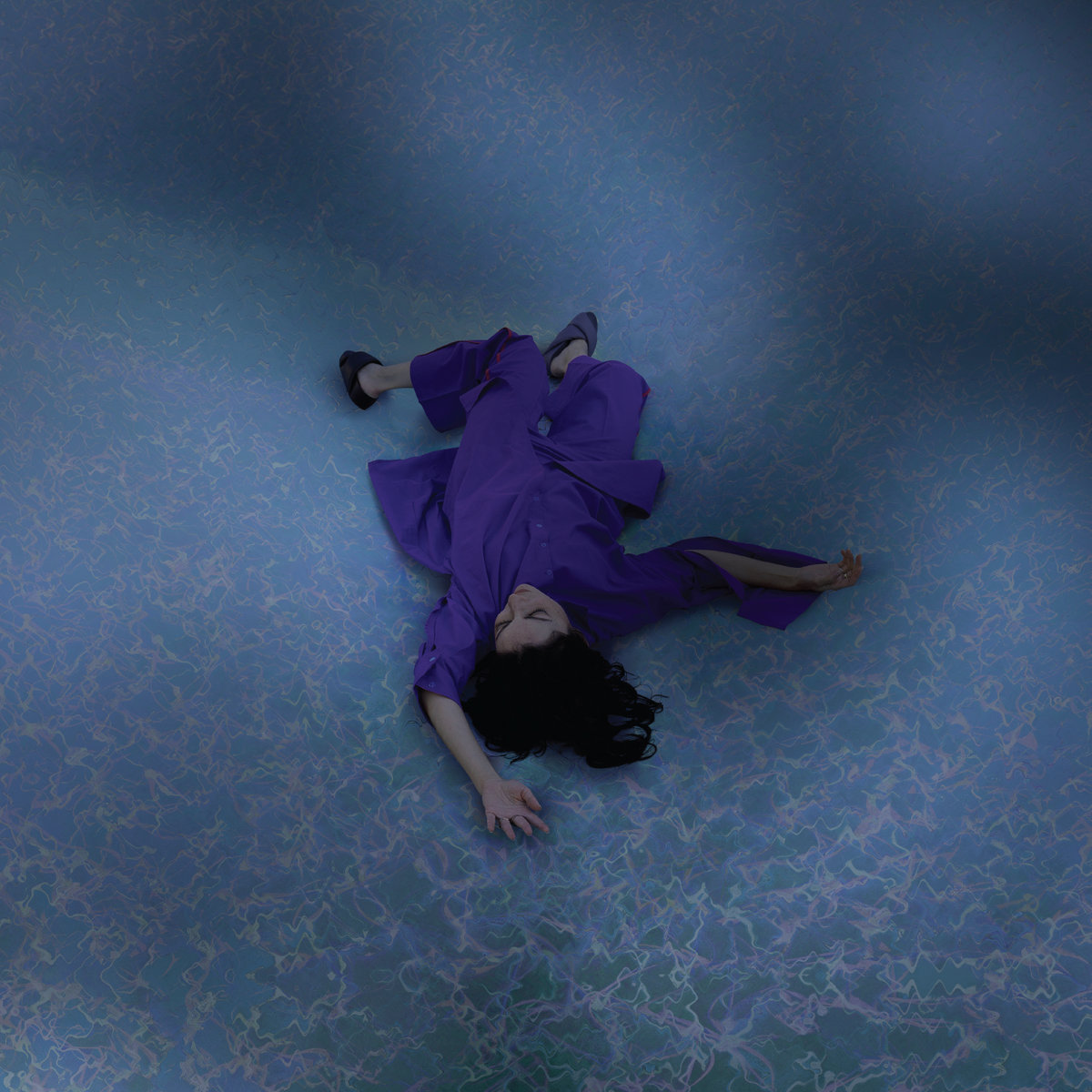 I was caught completely off guard by this latest opus from Dalt, as much of it sounds more like a three-way collaboration between Astrud Gilberto, Perez Prado, and Walter Wanderley than anything resembling the warped and stark electronic pop mutations that the Colombian composer has become synonymous with. After my initial disbelief subsided, however, I quickly decided that ¡Ay! may very well be the strongest album of Dalt's career to date. I suspect Dalt herself would probably agree, as it would be fair to say that her vision remains as compelling and innovative as ever, but she has merely kicked her self-imposed artistic restraints to the curb and embraced the warmer, more sensuous, and melodic sounds that she grew up around. Or, as the album description colorfully puts it, "through the spiraling tendencies of time and topography, Lucrecia has arrived where she began." In any case, the end result is a wonderfully sultry and evocative collection of seductive vocals and tropical rhythms beautifully enhanced with a host of psychotropic and industrial-damaged touches. And she somehow makes it sound like the most natural thing in the world. I definitely did not expect Dalt to secretly be a tropical pop genius at all, which makes her previous albums all the more fascinating now that I know that they were made while pointedly suppressing some of her greatest strengths.
I was caught completely off guard by this latest opus from Dalt, as much of it sounds more like a three-way collaboration between Astrud Gilberto, Perez Prado, and Walter Wanderley than anything resembling the warped and stark electronic pop mutations that the Colombian composer has become synonymous with. After my initial disbelief subsided, however, I quickly decided that ¡Ay! may very well be the strongest album of Dalt's career to date. I suspect Dalt herself would probably agree, as it would be fair to say that her vision remains as compelling and innovative as ever, but she has merely kicked her self-imposed artistic restraints to the curb and embraced the warmer, more sensuous, and melodic sounds that she grew up around. Or, as the album description colorfully puts it, "through the spiraling tendencies of time and topography, Lucrecia has arrived where she began." In any case, the end result is a wonderfully sultry and evocative collection of seductive vocals and tropical rhythms beautifully enhanced with a host of psychotropic and industrial-damaged touches. And she somehow makes it sound like the most natural thing in the world. I definitely did not expect Dalt to secretly be a tropical pop genius at all, which makes her previous albums all the more fascinating now that I know that they were made while pointedly suppressing some of her greatest strengths. This may be Swiss pianist/composer Raphael Loher's first solo album, but he has crossed my path before with his Baumschule trio (featuring Julian Sartorius and Manuel Troller). I am much less familiar with Loher's other trio (KALI), but the importance is that he has spent time improvising with inspiring musicians and has accumulated some very intriguing compositional ideas along the way. Interestingly, Keemuun is itself a bit of an improvisatory collaboration with inspiring (if unwitting) musicians, as Loher often played along with albums by other artists while experimenting with his rapid-fire piano patterns (Beatrice Dillon's rhythmically adventurous Workaround was a particularly central touchstone). In fact, just about everything about this album's evolution feels like fertile grist for a "galaxy brain" meme: a prepared piano album…limited to only ten notes spanning two octaves…improvised against cutting edge techno rhythms…but with all of those foundational rhythms totally excised from the final recording. Needless to say, all of those factors make for a very cool album concept in theory, but I am pleased to report that Loher's brilliant execution has made this a killer album in reality as well.
This may be Swiss pianist/composer Raphael Loher's first solo album, but he has crossed my path before with his Baumschule trio (featuring Julian Sartorius and Manuel Troller). I am much less familiar with Loher's other trio (KALI), but the importance is that he has spent time improvising with inspiring musicians and has accumulated some very intriguing compositional ideas along the way. Interestingly, Keemuun is itself a bit of an improvisatory collaboration with inspiring (if unwitting) musicians, as Loher often played along with albums by other artists while experimenting with his rapid-fire piano patterns (Beatrice Dillon's rhythmically adventurous Workaround was a particularly central touchstone). In fact, just about everything about this album's evolution feels like fertile grist for a "galaxy brain" meme: a prepared piano album…limited to only ten notes spanning two octaves…improvised against cutting edge techno rhythms…but with all of those foundational rhythms totally excised from the final recording. Needless to say, all of those factors make for a very cool album concept in theory, but I am pleased to report that Loher's brilliant execution has made this a killer album in reality as well.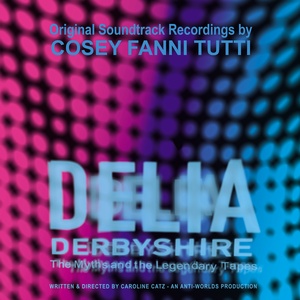 We seem to be in the midst of a long-overdue Delia Derbyshire renaissance at the moment due to the efforts of filmmaker Caroline Catz, Cosey Fanni Tutti, BBC Radiophonic Workshop's Mark Ayres, and others. Fittingly, this unusual and inspired album was commissioned back in 2018 as a score for Catz's similarly unconventional feature-length documentary. Sadly, it seems damn near impossible to see Catz's film at the moment (outside the UK, at least), but this soundtrack was released earlier this year to coincide with Cosey's own foray into telling Derbyshire's story (Re-Sisters: The Lives and Recordings of Delia Derbyshire, Margery Kempe and Cosey Fanni Tutti). The book, film, and album were all inspired by research into Derbyshire's archive and the voluminous recordings and writings that became available after the visionary electronic artist's passing in 2001. Apparently, copyright issues are preventing much of Derbyshire's unearthed work from seeing an official release (there are some great unofficial ones like Inventions For Radio/The Dreams out there), but this album is a compelling consolation prize: using Derbyshire's notes on her compositions and techniques, Cosey has achieved a sort of posthumous homage/collaboration in which her own aesthetic is co-mingled with Derbyshire's singular and groundbreaking techniques and sounds.
We seem to be in the midst of a long-overdue Delia Derbyshire renaissance at the moment due to the efforts of filmmaker Caroline Catz, Cosey Fanni Tutti, BBC Radiophonic Workshop's Mark Ayres, and others. Fittingly, this unusual and inspired album was commissioned back in 2018 as a score for Catz's similarly unconventional feature-length documentary. Sadly, it seems damn near impossible to see Catz's film at the moment (outside the UK, at least), but this soundtrack was released earlier this year to coincide with Cosey's own foray into telling Derbyshire's story (Re-Sisters: The Lives and Recordings of Delia Derbyshire, Margery Kempe and Cosey Fanni Tutti). The book, film, and album were all inspired by research into Derbyshire's archive and the voluminous recordings and writings that became available after the visionary electronic artist's passing in 2001. Apparently, copyright issues are preventing much of Derbyshire's unearthed work from seeing an official release (there are some great unofficial ones like Inventions For Radio/The Dreams out there), but this album is a compelling consolation prize: using Derbyshire's notes on her compositions and techniques, Cosey has achieved a sort of posthumous homage/collaboration in which her own aesthetic is co-mingled with Derbyshire's singular and groundbreaking techniques and sounds.
